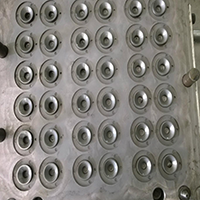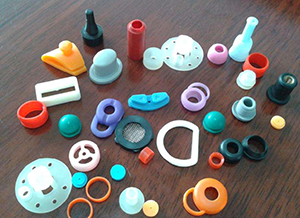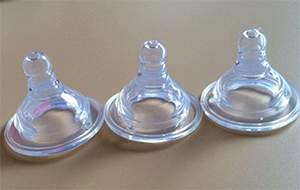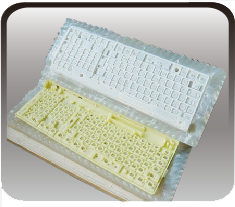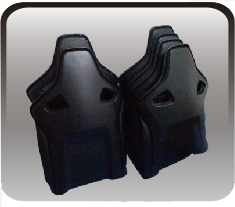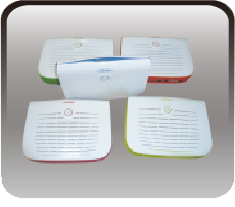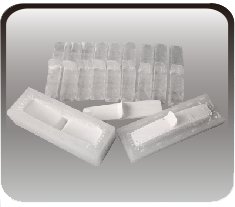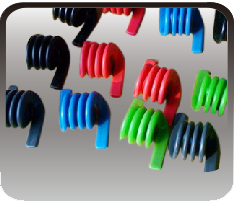The quality of the master model dictates part quality, and complexity can be accommodated through multi-segmented moulds. The polyurethane resin materials are mixed and poured into the silicon mould under a vacuum to avoid voids and bubbles before being cured in an oven. For higher production rates, multiple parts can be moulded simultaneously in one silicon rubber mould
Silicone Molding-we not just make vaccum casting from Silicone Molding but also Prodcution Silicone Molding
Vowin is dedicated to providing high quality, custom molded, precision silicone components for implantable and disposable medical devices. Their engineers are prepared to work with each customer in order to define the best molding process, tool design, and manufacturing controls according to material preferences, manufacturing and assembly plans, and specific application requirements.
Vowin silicone molding processes include:
Liquid Injection Molding – This liquid silicone rubber injection molding process is a closed process that delivers two-part liquid silicone directly into a mixer, which is then injected into the mold cavity. The fully automated process is best suited for high-volume production applications.
Transfer Molding – This silicone rubber transfer molding process uses a hydraulic ram that displaces rubber through gates and channels and into cavities. With a shorter set-up time used for both high and low volume production, this process is ideally used for silicone gumstock applications with complex shapes and thin walls, and for over-molding of metal and plastic inserts.
Compression Molding – Silicone rubber compression molding is where the rubber is physically placed into the cavities where the closing action of the mold completes the fill. This process requires more labor and longer curing times.
Micromolding – Silicone rubber micromolding is used for components in minimally invasive surgical tools, valves, seals, over-molding, and microsensory and microfluidics products. These products have the ability to hold tolerances within the micron range, even for the most complex features. Precise tooling with edge, fan, and/or microgates allows precise control of even the most challenging geometries.
Overmolding: Silicone to Metal Bonding/Insert Molding – This process bonds silicone rubber to various substrates through the use of insert molding and overmolding. Flexan ensures that the mold design will locate, orient, and hold the insert in the exact position throughout the molding cycle. Silicone overmolding is available on a variety of substrates including titanium alloys, stainless steel alloys, engineered plastics, PEEK thermoplastic, ceramics, and nylon.
What Is Silicone Rubber Molding?
In general, silicone rubber molding works in a similar way to other molding processes: A mold is manufactured with cavities in the shape of the product or part to be manufactured, and a material is introduced that fills the cavities, producing your parts.
Taking a closer look at silicone rubber molding, there are two processes that can be used, each offering different benefits and best suited to certain types of pieces. When choosing a silicone rubber molding manufacturer to partner with, be sure to seek one that can offer expert advice on which process would be best for you.
To provide you with some background, let’s examine top 5 each process.
LIM silicone molding: This process is the most similar to other injection molding processes, in that a liquid resin (in this case, silicone) is used to fill the mold cavities. With LIM silicone molding, the material is made of two separate components that are mixed right before injection into the mold, causing a chemical reaction that cures (or solidifies) the material very quickly. We’ll look more at some of the benefits of LIM silicone molding, and silicone molding in general, shortly.
Compression silicone molding: With compression silicone molding, the mold is heated and a solid rubber sheet is placed between the two halves. With heating, the rubber fills each cavity to take the final shape of the part.
Each of these processes has some distinct benefits, which are worth exploring before moving to the benefits of silicone rubber molding.
Benefits of LIM silicone molding: In general, LIM silicone molding is best suited for parts with complex geometries. This is because of the highly viscous nature of the liquid silicone material, which enables it to quickly and effectively fill all parts of the mold. LIM silicone molding also provides very tight tolerances and, as a “closed” process, is ideal for applications like food- or medical-grade parts.
Benefits of compression silicone molding: Compression silicone molding is a relatively simple process, which allows it to yield significant cost benefits on both the mold creation and production process fronts.rubber seals
From here, we’ll take a more in-depth look at the benefits of silicone rubber molding as compared to other manufacturing processes, including when you should consider using the process, and why it might be a good choice.
Exceptional speed: Silicone rubber molding manufacturers are plentiful in North America, meaning that shipping times are that much faster when you work with a domestic partner. When you work with a partner that is also able to utilize other in-house services like CNC machining to produce the mold for your part, you gain additional speed benefits. Faster production and fulfillment mean faster time-to-market for your product, which can yield tangible benefits to your bottom line.
High quality: Silicone rubber molding offers some of the tightest tolerances you will find in the manufacturing landscape — especially for medium-to high-volume production processes. The nature of the silicone rubber material means that complex geometries are achievable in close tolerances at any quantity you need. Working with a domestic manufacturing partner again yields benefits, as you’re much more easily able to conduct site visits to be assured of the facility’s quality.
Unique material properties: Silicone rubber provides numerous qualities that make it suitable for a variety of uses. These qualities include:
High flexibility
High strength
Insulates against electricity
Flexible yet strong enough to provide a tight seal
Chemically inert
Easily modifiable to FDA or medical grade
Durometer (hardness) is easily adjustable
Color and appearance can easily be changed
Weather resistant
Suitable for extreme temperatures — hot or cold
Suitable for complex or simple parts: The two types of silicone rubber molding available mean that you can effectively and efficiently draw on the process, regardless of the complexity of your product. Unique, custom geometries can be met by LIM silicone molding, while simple parts like gaskets and O-rings can be easily produced with compression rubber molding.
Perfect for specialized industries: Creating products for food or medical use involves a much different set of challenges than products for general consumer or industrial markets. A host of approvals and certifications must be met in pursuit of one of the most important aspects of manufacturing: Safety. The inert, easily modifiable nature of silicone molding makes it perfect for use in food- or medical-grade applications, whether for components or end-use products. Other material qualities contribute to its suitability as well, including its flexibility, tactile friction and feel, and its non-conducive nature.
Also perfect for general industry: Silicone rubber molding is used for a broad range of other industries in addition,
including:
Aerospacevarious rubber seals
Automotive
Electronics
Appliances
Consumer products
Construction
Manufacturing
And more
Why Should You Choose Silicone Rubber Molding?
Versatility, speed and cost are three of the greatest benefits that silicone rubber molding can offer. Especially as you approach higher volumes to produce your product, mold production, machine time and material sourcing investments — in terms of time and cost — can become significant. Silicone rubber molding utilizes an easily accessible material with a broad set of material properties that are suitable for most general uses. High-volume mold production can become especially costly, but silicone rubber molding can provide a more cost-effective yet still high-quality and efficient solution.
Material selection can also be a point of difficulty in manufacturing, as the challenge of finding one material that meets a specific set of specifications can delay production and drive up costs. Here, as well, silicone rubber molding provides a cost-effective yet versatile solution that can overcome many of these challenges.
For answers to your questions about whether silicone rubber molding is suitable for your project, contact RevPart, a leader of custom silicone manufacturers, today.
